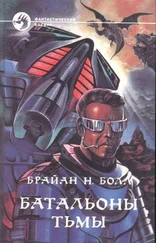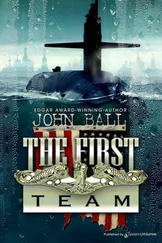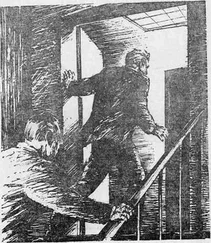“A very significant point,” Feinberg agreed. “Now, if you can think of any way to turn out that part for us, say in your spare time, and avoid the embarrassment of having to get a work order for something that we can’t prove is a military requirement, it would be an enormous help to us.”
“How about the cost of the stock?”
“We’ll pay for that.”
“I might possibly be able to find a spoiled piece that will do, but don’t count on it; we don’t spoil very much around here.”
“I’m well aware of that. And if you can see your way clear to bend things a little in our direction, then we will express our gratitude with the token gift of this picture for your collection. It is autographed, but the salient point is its rarity. In years to come, you may well possess the one-and-only color photograph of Monica Lee’s cunt in existence.”
It fell silent in the shop. Seconds passed as invisible radar beams of great power noiselessly swept the sky; then the master sergeant in charge of the machine shop made his decision. “It will take some time, perhaps a week.”
By means of a delicately sensitive gesture, Sergeant Feinberg indicated that what could not be helped must be endured.
“It depends on how much time I have,” the massive machinist relented.
Sergeant Feinberg replied to that by very carefully rolling up the striking photograph. “Here is your picture,” he said, with a hairline emphasis on the possessive. “I wouldn’t suggest leaving it lying around.”
“Nothing lies around in this place — anywhere. I have a vehicle; we can ride back to where your car is.”
To the men of Thule the near gift of a World War II B-17 to rebuild represented almost a godsend — it was something to do, a substantial challenge to be met, and an event unique in their lives. To them the long-derelict bomber was a great deal more than an accumulation of parts that might eventually become a working machine; it was a flying machine with a definite personality, a name, and a soul. To the men of Thule the Penguin was a living thing — or would be when they got through with her.
When Chief Master Sergeant Feinberg announced that he had found a source for the broken landing-gear fitting, and that a new one would be forthcoming soon, the restoration work resumed immediately. Wing panels that had withstood weathering for three decades were gone over until they shone like new. Internal structures were inspected and tested until their integrity was proven. New control cables were installed with meticulous care; every pulley over which they passed was examined, serviced, tested, and verified.
When the burly sergeant arrived in his truck, bringing with him the desperately needed new component, he was noticeably reluctant to disclose where and how it had been obtained. It was apparent to everyone who saw it that it was brand-new, but two planes had recently come in with tons of freight and either one could have brought it.
The nose of the B-17 rested on a cradle that held it two feet higher than it would have been if it had been resting on its own landing gear; that made working on the underside easy. Laid out on the floor there was a full-sized pattern of the original name insignia that had once been painted on the nose. Perched on a maintenance stand almost sixteen feet above the floor, Viggo Skov, the Danish artist, was repainting the tail number precisely as it had been. A small crew of men was busy reinstalling the left aileron, which had been fully overhauled, re-covered, and doped the proper aluminum color. When it was finally in place and fastened, they tried the control cables by hand and found that everything worked exactly as it should.
On the long benches two of the power plants had been completely torn down, with hundreds of individual parts laid out in a systematic pattern. Engines number three and four, mounted on stands, were awaiting their turn. On another long bench two of the propellers had been disassembled for overhaul. One set of blades had been reburnished and they were almost brilliant in their apparent newness.
On what had been the flight deck of the bomber so many things had been pulled out that what remained was a skeleton and no more. Not a single instrument was left on the panel, almost all of the control handles were gone, and the switches had been demounted. The pilots’ seats had been removed and the bare floor that remained had been prepared for repainting.
A forklift bearing a sizable crate came into the hangar from the ramp. The operator ran his machine up to the supply area next to where the main work was being done and asked, “Where do you want this?”
Andy Holcomb, the acknowledged engineer in charge, came over. “What is it?” he asked.
“I don’t know, Sergeant, it came up on that last C-141, marked for delivery to Hangar Eight.”
“Then leave it right there until we get it open and find out what it is. Are you sure there’s no name on it?”
“Nope — just ‘Hangar 8’ and that’s all.”
With the help of a Danish worker, Andy pulled the lid open; as he did so, the strong odor of fresh rubber was freed. He worked feverishly to get all of the lumber out of the way and the inner wrappings open. When he had gone far enough to be sure, he let out a shout that brought Ferguson and many of the others almost on the run. The last of the heavy packing paper was torn away to reveal a wooden pallet and on it three brand-new tires — two large ones for the main gear and a much smaller one for the tail wheel.
A calling card was taped to the side of one of the main tires; Ferguson pulled it off and read: To The Passionate Penguin — bappy landings.
And neatly printed below:
Goodyear Tire and Rubber Co.
Frederick L. Steinhammer
Eastern Sales Manager
It took the still-startled lieutenant several seconds until he remembered the commander of the reserve C-141 crew he had met on the ramp well before the last airlift off the ice cap.
As he stood and looked at the wonderful new tires, and smelled their freshness, he realized that a major uncertainty and been overcome. He had planned to use the thirty-year-old tires because he had no alternative, but he had known in his heart that they might be dangerous. Now that hazard had been swept away.
Sergeant Stovers was not there to share his elation — he was in the mess hall talking with the crew of a Canadian C-130 that was scheduled out to Alert in the morning. “Since you are a communications station,” he said, choosing his words carefully, “I presume that you have an electronics maintenance capability.”
The very tall captain who headed the crew answered. “Yes, of course we do. Our lads are quite good at it, really.”
“Is your bench time fully taken up?”
“I wouldn’t say so. Let me put it this way, Sergeant: we’d be delighted to overhaul the B-17’s radios for you if you’d like. In fact, we’ve already talked about it. But we didn’t want to be forward, particularly since its your project. So we were rather waiting to see if our assistance would be welcome.”
Sergeant Stovers raised his coffee cup. “At this point, sir, I’d say that it’s close to essential. The only man we had who was really qualified to do the job just left on the rotator.
The captain smiled. “Actually, we’d be quite proud to be part of the program. If we can have the sets to take with us, we may be able to get some of them back down to you within the next two weeks or so.”
“We have a lot of good parts in Supply,” Stovers said.
“So have we, and the commander is a noble citizen; he’ll be for it, I’m sure. Any chance of getting a ride later on?”
“You’re a cinch,” Stovers declared. “Get an approval from your CO and we’ll fly her up and visit you. Then we’ll hop everybody that wants to go.”
Читать дальше












